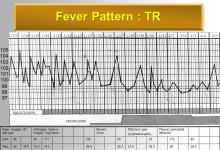
RheumThoughts are opinion pieces from healthcare professionals in the RheumNow network. They are not indicative of the views and opinions of the RheumNow Editorial team. To join the discussion on this article, use the discussion area below.
RheumThoughts: Universal Imaging for GCA in PMR? Not So Fast Save
Hi again. It's Mike Putman from the Medical College of Wisconsin. Happy to be back on RheumNow as part of the polymyalgia rheumatica or PMR campaign. Now, I last appeared here to discuss, and I guess somewhat wound up calling it more of a rant than a discussion, but whatever, rheumatoid arthritis ILD. If you haven't checked out that coverage on RheumNow, I highly recommend it. The subject of my discussion/rant at that point was over-diagnosis, which I define loosely as making people into patients unnecessarily. In the case of polymyalgia rheumatica or PMR, that means telling someone with PMR that they actually have giant cell arteritis unnecessarily.
So let me tell you about how that happens. Now, we all know there's this relationship between PMR and GCA, right? About 50% of GCA patients have PMR symptoms, and about 10% of patients with PMR will have GCA diagnosis or will develop GCA over the course of their disease.
Now, I screen for GCA at every patient visit by asking my PMR patients if they have any symptoms of GCA. I also listen for axillary bruit and check temporal arteries for tenderness. If patients have signs or symptoms of GCA, then you know, I work them up as such. That's what we do as rheumatologists, right? But lately I have been concerned to hear other doctors advocating for screening all PMR patients with imaging. Now, recommendations vary by center and availability, but they include ultrasound, CT angiogram, MR Angiogram, or even PET CTs.
Now, I think you can see where this is headed, but I'll spell it out for you one more time: overdiagnosis.
Now, for decades we've been screening GCA with a patient history and exam. Doing so with imaging would be a sharp departure from the current standard of care. And you may be asking yourself, well, yeah, but what could it hurt? Don't you want to catch GCA early?
Let me tell you the problems with this.
Now first, this would be expensive. The yearly incidence of PMR is something like one in a thousand patients over the age of 50. Extrapolate that over the whole United States, and you get 55,000 new diagnoses per year, give or take. MR angiograms on all of those patients would cost over a hundred million dollars per year. Now, that's not a negligible cost. Sure, CTA would be cheaper. PET CT would be more expensive, and I just don't know where this is gonna land if we actually implemented it.
Now, the second, more important to me honestly, would be harm. Now many of these patients will get CT angiograms. So you'll be causing many of these patients to have acute kidney injury and contrast induced nephropathy - that is, that is a harm. You are also going to find incidental lomas. So these random little bumps and nodules that wind up getting biopsied or surveilled in the NLST, which is this really big screening study where they did CT scans of chest to look for cancer. You know, the number needed to harm by telling someone that they may have cancer when they didn't was one in 19 patients, that's pretty high. And if we're screening everybody, we are going to start to do that. The harm from an unnecessary biopsy is even harder. Think about a PET CT, which is probably gonna be the worst of these, where you are finding tons and tons of little inflammatory schmutts and then you have to figure out what to do with all of that. It's gonna be a big problem.
Now, third, and perhaps most importantly honestly, is overtreatment. Overdiagnosis doesn't always beget overtreatment, but in this case, it's very clear to see how that would happen, and the problem with overtreatment is, of course, more harm.
Now we all know how different the steroid regimens between GCA and PMR can be, right? Roughly one in four patients who presents with purely PMR symptoms, um, but get screened with imaging will wind up being re-categorized. So this isn't like a small thing that we'll be doing to a small number of people. It's gonna be tens of thousands of patients per year who suddenly go from, oh, let's do 15 milligrams and taper you quickly to a MIG per kg of steroid and immediately starting a biologic agent and then, you know, suffering the enormous consequences of long-term harm that comes with glucocorticoids. Again, that's tens of thousands of patients who you already know in your practice who you've followed for years.
And let me ask you a question 'cause these people exist: how many of your PMR patients have ever lost vision? And, and, and that's the crux of the problem, right? All this screening and overdiagnosis and overtreatment and, and for what? There have been no studies to date that show that this prevents vision loss. There have been no studies that have evaluated how harmful the additional steroids and biologics will be. I mean, we all know that escalating from 15 milligrams of steroid to 80 milligrams of steroid is gonna be harmful, but we have no idea how to categorize it. But you know, I can tell you it's there. No studies have also asked what it, what it does to tell someone that they have a subclinical disease that may make them blind and then give them a ton of steroids and then ask them how their quality of life improved. I could see this making patients on net much less happy and much less thriving.
Now, an abstract at this year's ACR convergence meeting followed a group of these patients and observed a high rate of flares among those who had the subclinical GCA. But, but so what? So they had more flares. I don't need a pet CT to find a flare. I see my patients regularly. They call me when they're having a flare and we bump the steroids if that happens. I have never once had someone with PMR lose vision while doing that. And I imagine that most of you will echo that sentiment.
So in conclusion, I do not think universal screening with imaging for PMR is ready for primetime. I've said it before and I'll say it again. There are no solutions in rheumatology. There are only trade-offs. And the trade-off here is expensive imaging, incidental omas, unnecessary contrast, excessive, unnecessary, potentially corticosteroid exposure and, and honestly the ever present anguish of your over-diagnosed patients experience when they've been told they have GCA and they could go blind. I mean, that's not a benign thing to do. The benefits here remain unsubstantiated, although I could imagine there being some, but they're at this point, they're theoretical. So until that changes, I say no to universal screening in PMR.
Thanks so much for having me. Appreciate RheumNow for putting on this series. Everyone have a great day.










If you are a health practitioner, you may Login/Register to comment.
Due to the nature of these comment forums, only health practitioners are allowed to comment at this time.